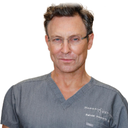Posted underEyelid Surgery q&a
Can lower eyelid skin "tighten up" after lower blepharoplasty with fat repositioning?
Can skin tighten up or retract after a lower blepharoplasty where fat repositioning was performed (no filler, no skin pinch)? Seems like skin can become more "loose" since the original fat pockets are either removed or repositioned elsewhere. Worried that even slightly saggier skin will ultimately make wrinkles easier to form under the eyes, even though the initial result looks good.
Answers (5)
From board-certified doctors and trusted medical professionals
Dr. A.J. Amadi, MD

Dr. A.J. Amadi, MD
Oculoplastic Surgeon, Board Certified in Ophthalmology
Answer
Dr. Jason Emer, MD

Dr. Jason Emer, MD
Dermatologic Surgeon, Board Certified in Dermatology
Answer
Dr. Randal Haworth, MD, FACS

Dr. Randal Haworth, MD, FACS
Board Certified Plastic Surgeon
Answer
More Eyelid Surgery Questions
See all Eyelid Surgery Q&AWE SEND PRETTY
EMAILS
What’s trending? Who’s turning heads? Which TikTok myths need busting? We’ve got you. No fluff, no gatekeeping—just real talk. Get our free, unfiltered newsletter.

